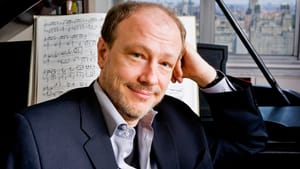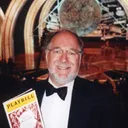Stay in the Loop
BSR publishes on a weekly schedule, with an email newsletter every Wednesday and Thursday morning. There’s no paywall, and subscribing is always free.
How Russians stay warm in January
Philadelphia Orchestra’s Russian concerts

You’d expect a concert with Tchaikovsky’s Fifth Symphony and his Nutcracker to taste like a cone of cotton candy. Instead, Yannick Nézet-Séguin conducted unfamiliar excerpts from The Nutcracker ballet rather than the usual highlights that constitute the Nutcracker Suite. And Yannick led a fresh and bracing interpretation of the symphony.
This was the beginning of what the Philadelphia Orchestra calls its St. Petersburg Festival — a comforting reminder that some cities are even colder than Philadelphia in January. To underline the concept, Yannick opened the concert with the first section of Glazunov’s The Seasons, which is subtitled Winter.
Actually, this festival seeks to acquaint Philadelphians with the music that was created and performed in the Russian Empire’s capital city during its grand days before the Bolshevik Revolution.
As the longtime director of the St. Petersburg Conservatory, Glazunov was a fitting choice to kick off the festival. Winter’s trills and rapid scales suggested frost, snow, and ice. The performance made me yearn to hear the entire Seasons. Although Glazunov lived until 1936 and Rachmaninoff until 1943, their music remained untouched by Modernism. Conservatism was at the heart of these two festival weeks (with one exception that I’ll get to later).
No coughing
Tchaikovsky’s Symphony No. 5 had its premiere in 1888 with the composer himself conducting the St. Petersburg Philharmonic Society. I loved it as an adolescent, less so as an adult, when Tchaikovsky’s endless repetitions of melodies simply annoyed me. After the first theme for cellos, for example, he has the section echo the last few notes. The same when the violins repeat and repeat the endings of its melodies. Unlike Beethoven, who used repetitiveness to produce tension, Tchaikovsky seemed to let his music wander.
But Yannick and the Orchestra relieved me of these reservations. Yannick himself turned away from the Tchai 5 in his late 20s, and this is the first time he’s led the symphony in more than a decade. (He and the Philadelphians will feature this symphony during their tour of Europe this spring.)
Yannick emphasized the links between the symphony’s four movements. The quiet opening by clarinets in their low register, after all, states the same melody that emerges in the third-movement waltz and reemerges loudly in the piece’s finale. Yannick underlined this effect by taking only the briefest pause between each movement. No coughing, no shuffling of feet; instead, a continuation of mood.
The Nutcracker excerpts were mostly overlooked narrative segments of the score that illustrated some of the techniques that Tchaikovsky used in his symphony. The passionate, romantic music for the Sugar Plum Fairy and her Cavalier appeared only at the end.
Mood change
The St. Petersburg Festival continued on January 22 with music by Rachmaninoff, who maintained Tchaikovsky’s genre and expanded on it — in length, if not in substance.
Yannick confronted the accusation of bloating in Rachmaninoff’s 1907 symphony by restoring frequently cut sections (although he didn’t perform the repeat of the opening theme). It was a propulsive performance — colorful without wallowing in lushness.
This concert opened with one of classical music’s greatest hits, Rachmaninoff’s Prelude in C-sharp minor, a bombastic showpiece for solo piano that the composer often performed in his recitals. Leopold Stokowski’s orchestration is notable for the way Stoky changed the tone from grandiosity to sadness, featuring spooky tremolos by the strings. Stokowski said that what he remembered most about Rachmaninoff was his melancholy because his native land had changed, and Stokowski’s orchestration reflected that mood.
An atypical insertion into the festival was the American premiere of Mark-Anthony Turnage’s Piano Concerto. With its jazzy blue-note passages, distant sounds coming apparently from inside a jazz club, and marchers approaching and passing by, it’s a cross between George Gershwin and Charles Ives. Its immediacy of rhythm — generated from the opening by a piano solo — almost makes you want to dance. The playing of Marc-André Hamelin, who performed the piece’s premiere with Nézet-Séguin and the Rotterdam Philharmonic in 2013, was marvelously fluid. The opening and closing movements are tricky and inventive, while the middle movement is a lovely lullaby composed in memory of the German composer Hans Werner Henze, who died in 2012.
What, When, Where
Philadelphia Orchestra: Glazunov, "Winter" from The Seasons; Tchaikovsky, selections from The Nutcracker and Symphony No. 5. January 15-17, 2015. Rachmaninoff, Prelude in C-sharp minor, orchestrated by Stokowski; Turnage, Piano Concerto; Rachmaninoff: Symphony No. 2. January 23-24, 2015. Marc-André Hamelin, piano; Yannick Nézet-Séguin, conductor. At Verizon Hall, Kimmel Center, Broad and Spruce Sts., Philadelphia. 215-893-1999 or www.philorch.org.
Sign up for our newsletter
All of the week's new articles, all in one place. Sign up for the free weekly BSR newsletters, and don't miss a conversation.
 Steve Cohen
Steve Cohen